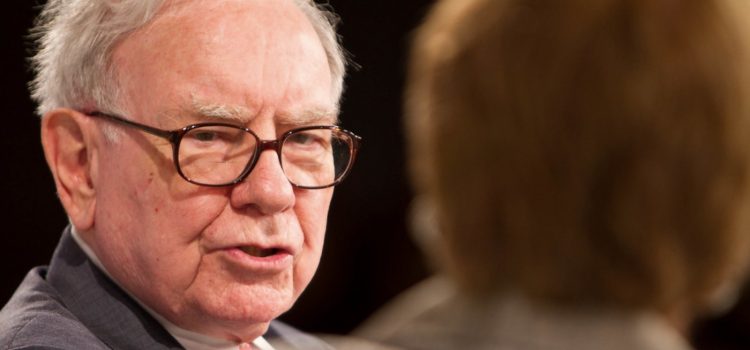

This article is an excerpt from the Shortform book guide to "The Snowball" by Alice Schroeder. Shortform has the world's best summaries and analyses of books you should be reading.
Like this article? Sign up for a free trial here.
What are the lessons to learn from Warren Buffett? Why is Buffett an inspirational figure in business?
In his biography The Snowball, Alice Schroeder praises Buffett for his authenticity and honesty. He may be one of the richest people in the world, but he uses his platform to teach what he can about business and life.
Let’s look at many of Warren Buffett’s lessons that are worth listening to.
Buffett the Teacher: Paying Wisdom Forward
Though Warren Buffett grew to be a public figure later in life, he’d always been eager to speak out on issues close to his heart. When it came to business in particular, Buffett relished the role of educator and would expound at length to anyone who would listen. As his experience and influence grew, so did his platforms to teach other people, the ideas about business and life he could offer, and the financial power he was able to wield in order to lead by example. Here’s how Warren Buffett’s lessons were distributed to the world.
His primary venue for teaching was his annual Berkshire Hathaway shareholder meeting, at which he would lecture and answer questions about why he made investments and how he viewed the market. According to Schroeder, by the end of the ’90s, over 10,000 people would attend to hear him speak. His favorite audience was college students, who he saw as being more flexible and receptive. What he wanted most was for people to learn and put into practice the principles and ideals he believed in.
(Shortform note: Video highlights of Berkshire Hathaway’s shareholder meetings are now freely available online. Attendance is limited to shareholders only, which at approximately $500,000 per share is a very expensive ticket to buy. When asked for investment advice at the 2022 shareholder meeting, Buffett answered that personal growth is the best investment anyone can make. In particular, he references Dale Carnegie’s public speaking course that helped him overcome his awkwardness in his youth and helped him grow into the teacher that he is today.)
In the realm of finance, his words echoed those of Benjamin Graham—that every stock has an intrinsic value, despite the short-term mood of the market. Likewise, Buffett taught that a person’s life had an intrinsic value, regardless of others’ opinions. He argued that people like himself were born into privilege, and it was their duty to aid those who weren’t. As Schroeder relates, Buffett taught that success wasn’t measured by wealth but by how much love was in a person’s life and what positive impact they left on the world.
In the latter case, Buffett taught by dramatic example, upending the ego-driven culture of rich philanthropy. In 2006, Buffett revealed his plan to give away $37 billion—the largest charitable gift in history. Most would go to the Bill and Melinda Gates Foundation, which he trusted to make the best use of his funds. The rest went to his children’s foundations and one in Susie’s name. Schroeder writes that Warren Buffett would leave nothing in his own name behind—no buildings, endowments, or grand memorials—except for the record of a life well spent.
The Giving Pledge
In 2010, Warren Buffett joined with Bill and Melinda Gates to challenge the richest people in the world to give the vast majority of their wealth to charity, either during their life or as bequests through their estates. In addition to encouraging the wealthy to give more, the Giving Pledge urges people to plan their philanthropy better and sooner. From 40 original signatories in 2010, the Giving Pledge has now been taken by over 200 billionaires.
One difficulty faced by the billionaires on the list is that their fortunes are growing too fast for their charitable giving to keep up. A biennial report from the Institute for Policy Studies suggests that the growing wealth disparity between the rich and the poor leads to fewer small donations, consolidating control of nonprofit organizations into the hands of the wealthy elite.
The Snowball Rolls On
In the wake of the 2008 financial crisis, 2009 proved to be the worst year on record for Buffett’s investments, which fell in value by nearly 10%. In 2011, Buffett broke from his policy of never investing in technology stocks to buy $10 billion in shares in IBM, which he would later sell at a loss. In 2016, he invested heavily in Apple, impressed by its profitability and leadership.
More than a decade after the publication of The Snowball, Warren Buffett’s net worth climbed to over $100 billion, despite his regular enormous gifts to various charitable foundations. Though Buffett resigned from the Gates Foundation board in 2021, which some media outlets characterized as Buffett trying to distance himself from Gates, Buffett pointed out that he was resigning from all corporate boards other than Berkshire Hathaway’s, and that his philanthropic goals remained in line with those of the Gates Foundation.
To silence worries about his own succession, Buffett named Greg Abel to be his eventual replacement as Berkshire Hathaway’s CEO. Now in his 90s, Buffett still lives in Omaha, Nebraska, in the house he bought for his family in 1958, along with his wife, Astrid Menks.

———End of Preview———
Like what you just read? Read the rest of the world's best book summary and analysis of Alice Schroeder's "The Snowball" at Shortform.
Here's what you'll find in our full The Snowball summary:
- A biography of one of the wealthiest people in the world, Warren Buffett
- Why Buffett is known for his honesty and wisdom, just as much as his wealth
- How Buffett's life was shaped by his family, his teachers, and the era into which he was born






